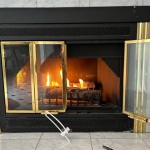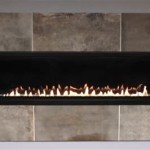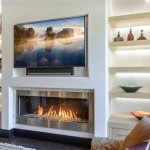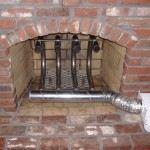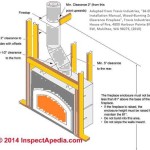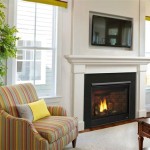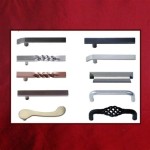Mounting a TV Over a Stone Fireplace: A Comprehensive Guide
Mounting a television over a stone fireplace presents a unique set of challenges compared to mounting on a standard drywall surface. Stone, unlike drywall, offers a hard, uneven surface that can be difficult to penetrate and requires specialized tools and techniques. Improper execution can lead to damage to the stone, an unstable television mount, and potential safety hazards. This article provides a comprehensive guide to successfully mounting a television over a stone fireplace, covering essential considerations, necessary tools, and step-by-step instructions.
Before commencing any installation, a thorough assessment of the fireplace and surrounding area is crucial. This assessment informs the choice of mounting hardware, the mounting location, and the overall feasibility of the project. Failing to properly assess the situation can lead to significant complications and potential structural damage.
Assessing the Fireplace and Surrounding Structure
The type of stone used in the fireplace construction significantly impacts the installation process. Some common types include natural stone (granite, limestone, slate), manufactured stone veneer, and brick. Natural stone tends to be the most challenging to drill through due to its density and hardness. Manufactured stone veneer, while aesthetically pleasing, is typically thinner and may require additional support structures to ensure a secure mount. Brick fireplaces often have softer mortar joints that can be exploited for easier drilling, but care must be taken to avoid weakening the overall structure.
Examine the structural integrity of the fireplace. Look for any signs of cracking, crumbling, or water damage. These issues should be addressed before proceeding with the installation, as they can compromise the stability of the mount. If the fireplace is actively used, consider the potential impact of heat exposure on the television's lifespan. Excessive heat can damage the screen and internal components, so a heat shield or relocation of the television might be necessary.
Consider the placement of electrical outlets and cable connections. If these are not already located near the desired mounting location, professional electrical work may be required to avoid unsightly wires and potential safety hazards. Running cables through the stone itself is often impractical and should be avoided unless there is an existing conduit.
Choosing the Right Mounting Hardware and Tools
Selecting the appropriate mounting bracket is paramount. A full-motion mount offers flexibility in adjusting the viewing angle, while a fixed mount provides a more streamlined appearance. When mounting over a fireplace, a tilting mount can be beneficial for compensating for the elevated viewing angle. Regardless of the type, the mount must be rated to support the weight of the television. Refer to the television's specifications for its exact weight and choose a mount with a higher weight capacity to provide a safety margin.
Specialized drill bits are essential for drilling into stone. Carbide-tipped masonry drill bits are generally effective for softer stones like limestone and brick. For harder stones like granite, diamond-tipped drill bits are recommended. These bits are designed to withstand the abrasive nature of the stone and provide clean, accurate holes. Avoid using standard drill bits, as they will quickly dull and are unlikely to penetrate the stone effectively.
Appropriate anchors are critical for securing the mount to the stone. Expansion anchors, sleeve anchors, and wedge anchors are common choices for stone installations. The selection depends on the type of stone and the load-bearing requirements. Expansion anchors are suitable for lighter loads, while sleeve and wedge anchors provide greater holding power for heavier televisions. Ensure that the anchors are of sufficient length to penetrate deep into the stone and engage the underlying structural material. Consult with a hardware specialist to determine the most suitable anchor type for the specific application.
Beyond drill bits and anchors, other essential tools include a hammer drill, a level, a stud finder (to identify underlying support structures if applicable), a measuring tape, a pencil, safety glasses, and work gloves. A dust mask is recommended to protect against inhaling stone dust during drilling. A wire snake or fish tape may also be useful for routing cables behind the fireplace.
Step-by-Step Installation Process
Before initiating any drilling, ensure the power to the area is turned off at the breaker. This precaution eliminates the risk of electrical shock during the installation process. Using a stud finder, locate any underlying studs or framing behind the stone. If studs are present, they can be used to provide additional support by securing the mount directly to them. If no studs are found, rely on the stone anchors for primary support.
Using a level and measuring tape, carefully mark the location for the mounting bracket on the stone. Double-check the measurements to ensure proper alignment and desired viewing height. Use the mounting bracket as a template to mark the locations for the anchor holes. Accurate marking is crucial for a level and secure mount.
Using the hammer drill and the appropriate drill bit, carefully drill pilot holes at the marked locations. Start with a slow drill speed and gradually increase it as the bit penetrates the stone. Maintain a steady pressure on the drill and avoid forcing it. Periodically remove the drill bit to clear any accumulated dust. The depth of the pilot holes should match the length of the anchors being used.
Insert the stone anchors into the pilot holes. Depending on the type of anchor, this may involve tapping them gently with a hammer until they are flush with the stone surface. For expansion anchors, tighten the bolt or screw to expand the anchor within the hole. Securely attach the mounting bracket to the stone using the appropriate bolts or screws. Ensure that the bracket is level and securely fastened. Test the mount by applying gentle pressure to ensure it is stable.
Carefully attach the television to the mounting bracket according to the manufacturer's instructions. Ensure that all cables are properly connected and neatly routed. Use cable ties or clips to manage the cables and prevent them from hanging down. Turn the power back on at the breaker and test the television to ensure it is functioning correctly.
Once the television is mounted and functioning, perform a final inspection of the installation. Check the stability of the mount, the alignment of the television, and the neatness of the cable management. Clean up any debris or dust generated during the installation process. By following these steps and taking the necessary precautions, one can successfully mount a television over a stone fireplace and enhance the viewing experience.

Smarthome And Theater Systems Residential Solutions Photo Album Tv Mount Over Stone Fireplace In New Canaan Ct

Mounting A Tv Above Fireplace With Full Tutorial Fixthisbuildthat

Mounting A Tv Above Fireplace With Full Tutorial Fixthisbuildthat

75 Tv Mounted Above Stone Fireplace

Can I Mount My Tv Above The Fireplace

Natural Stone Fireplaces With Wall Mount Television Design Ideas

Mounting Tv Over Stone Fireplace Kouland Technology Inc

Mantelmount How To Mount Your Tv Above A Fireplace Infarrantly Creative

Mounting A Tv Above Fireplace With Full Tutorial Fixthisbuildthat

Can I Mount My Tv Above The Fireplace
Related Posts

